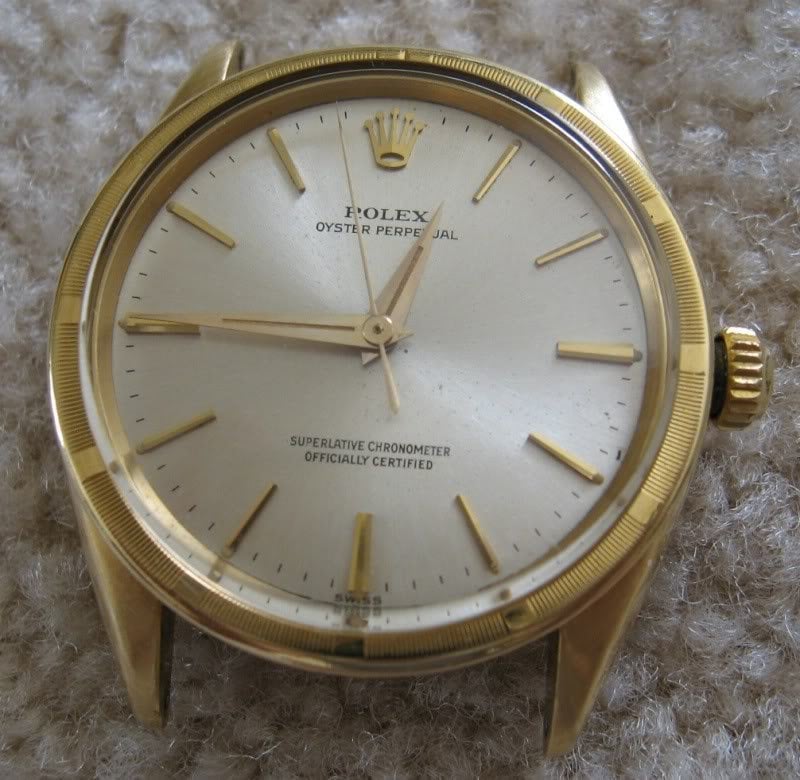Horologist
·Although this topic has been repeatedly discussed on just about every horology forum, there is still some confusion about differentiating Tritium from Radium dials.
My interest is mainly on the early 1960's Tritium dials which weren't labelled with "T" during that early transition from the use of Radium to Tritium. I believe they exist as I recall reading a post on this topic on some very old post (not sure of forum).
My understanding is that the best non invasive observations is by use of a Geiger counter compared to relying on a UV light.( I still have old Tritium dialed watches which glow brightly in the dark for lengthy periods)
Tritium mainly emits Beta particles which are faintly picked up by a Geiger counter to my knowledge.
As Radium 226 mostly emits alpha and gamma particles, the Geiger counter will not pick up presence of alpha particles as;
they are firstly, heavy and blocked even by a piece of paper and secondly most Geiger counters I have known do not have the feature to detect them.
My understanding is that any detected radiation pointing to the presence of Radium, would be from the accompanying gamma rays which would be picked up by the Geiger counter (not detected in Tritium).
Hypothetically, if one were to measure the Geiger counter readings of a 1962 Seamaster 135.003 which would most likely be Radium and compare it to the readings of the same model with a Tritium labelled dial with expectations of showing different radiation readings, would it be fair to assume that comparing those two readings to another unlabeled 135.003 Tritium dial , should have closer readings to the T labelled model???
Although a Geiger counter would not confirm an unlabeled dial to be Radium from the absence of detecting alpha particles, one would expect that it would at least rule out the dial to be Radium if the readings are closer to the known labeled Tritium dial??? .
I am aware that most, especially those new to this can be confused as to what is a true control to distinguishing radium versus Tritium, which I thought of resurfacing the topic again.
My interest is mainly on the early 1960's Tritium dials which weren't labelled with "T" during that early transition from the use of Radium to Tritium. I believe they exist as I recall reading a post on this topic on some very old post (not sure of forum).
My understanding is that the best non invasive observations is by use of a Geiger counter compared to relying on a UV light.( I still have old Tritium dialed watches which glow brightly in the dark for lengthy periods)
Tritium mainly emits Beta particles which are faintly picked up by a Geiger counter to my knowledge.
As Radium 226 mostly emits alpha and gamma particles, the Geiger counter will not pick up presence of alpha particles as;
they are firstly, heavy and blocked even by a piece of paper and secondly most Geiger counters I have known do not have the feature to detect them.
My understanding is that any detected radiation pointing to the presence of Radium, would be from the accompanying gamma rays which would be picked up by the Geiger counter (not detected in Tritium).
Hypothetically, if one were to measure the Geiger counter readings of a 1962 Seamaster 135.003 which would most likely be Radium and compare it to the readings of the same model with a Tritium labelled dial with expectations of showing different radiation readings, would it be fair to assume that comparing those two readings to another unlabeled 135.003 Tritium dial , should have closer readings to the T labelled model???
Although a Geiger counter would not confirm an unlabeled dial to be Radium from the absence of detecting alpha particles, one would expect that it would at least rule out the dial to be Radium if the readings are closer to the known labeled Tritium dial??? .
I am aware that most, especially those new to this can be confused as to what is a true control to distinguishing radium versus Tritium, which I thought of resurfacing the topic again.
Edited:

